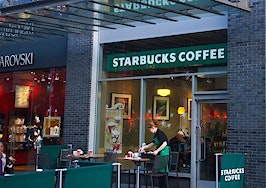- The housing market will likely slow down next year due to ongoing inventory shortages and rising mortgage loan interest rates.
- Most of the sales activity in 2016 will be driven by sellers who are finally able to realize equity gains and list their homes for sale.
With its best year since the recession in the bag, the housing market will likely slow down next year due to ongoing inventory shortages and rising mortgage loan interest rates, the National Association of Realtors (NAR) predicts.
The association’s chief economist, Lawrence Yun, took to the stage at the 2015 Realtors Conference & Expo to offer his economic forecast for 2016. According to Yun, the 2015 housing market was supercharged by pent-up demand in the last few years, wage and job growth and rising home values, but existing home sales next year will likely slow to a more moderate pace.
Home sales will likely finish the year at a pace of 5.3 million before expanding about 3 percent to 5.45 million next year due to rising mortgage rates and supply constraints, Yun said.
Single-family starts will close the year around 1.1 million and reach 1.3 million in 2016, falling short of the 1.5 million needed to stay on 2015’s strong pace. New home sales are likely to total 505,000 at year’s end before increasing to 590,000 next year.
Most of the sales activity in 2016 will be driven by sellers who are finally able to realize equity gains and list their homes for sale, using the proceeds to fund down payments on their next home, Yun predicted.
“Another year of stronger housing demand and sales will be driven by increasing consumer confidence and solid job growth — especially in the states in the West and South that are leading the rest of the pack and will continue to see further job creation,” Yun said.
“The one variable to even higher sales will be if supply can keep up enough to keep a lid on prices, especially with mortgage rates on the rise.”
Yun also noted that the share of first-time buyers fell to its lowest level in nearly 30 years this year, and he attributed this trend to student loan debt, competition from similar homes on the market and lack of affordable inventory.
“Even among recently successful first-time buyers, 41 percent have student debt and the typical amount is $25,000. Repaying this debt amidst flat wage growth and sharp rent increases only makes it more difficult to come up with the cash needed for a downpayment,” Yun said.
“Their emergence back into the market will be a gradual one, but our data does show that young adults view homeownership as a good financial investment and part of their personal American dream.”









